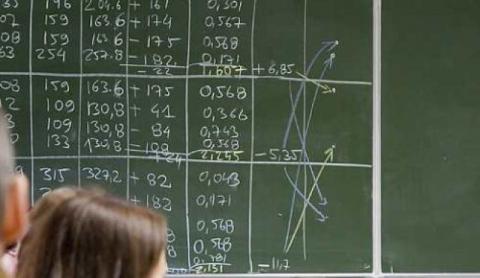Why high school students really should study for that math test
The first reason is that high schools seem to be encouraging their students to take a less challenging exam. Students who are willing to do five units are advised to take four, and likewise down the ladder. That’s because no one gets a matriculation certificate without taking the math exam, so teachers and principals figure it’s better to have a higher pass rate than for students to test at a higher level. The second reason is that many students, and their parents, don’t want to put in the effort. There’s a lot more work required to complete the coursework for five units than for four.
And the third reason is that the universities don’t offer any incentive for students to take the more demanding math exams, even though they say they would like to see more applicants who have five units of math under their belts. The scoring system for applicants awards 25 points for five units and 15 for four. High school students, and their parents, may figure that the 10-point difference doesn’t justify the extra work, especially if they expect to do better on the four-unit exam.
Depriving the country
But for the universities, and ultimately for Israel’s economy, such calculations come at a cost of depriving the country of young people studying mathematics at the highest level. This is evidenced by the fact that, even as fewer students challenge themselves at the highest level of math, those who do are scoring better than ever. The proportion of those scoring 85 or higher in 2012 reached 37% for three units, 42% for four units and an astounding 55% for five units. Statistical projections indicate that only the top 10% or 20% should be achieving the highest scores; the fact that at least three times as many are doing so signals that students are under-challenging themselves.
Students who can score 85 or higher for three units should be taking four, even if that means they would do worse on the exam. The fact they aren’t doing so suggests Israel is losing almost half its best math students, the high school graduates who will become the country’s next generation of scientists and engineers.
Cost of the math gap
Research by Kimhi and Arik Horovitz, also of the Taub Center, showed the cost of the math gap by examining the impact of taking higher-level math (four or five units) on students’ future course of university study, choice of profession and earning power. They did this by examining the academic and career trajectories of 29-year-olds. “Studying math at a higher level makes it possible to be accepted to a more prestigious academic study track, which leads to higher-level employment and higher wages,” said Kimhi. “In essence, the importance of learning higher level math is two-fold,” he said. “First, it directly contributes to the students’ skill level, and second, the very fact that these students have chosen to study math at a higher level indicates their increased capabilities and motivation.”
The most interesting gap was between students taking four units and those taking five units. In spite of the fact that all those students are skilled at math, the Taub Center research shows that students who choose five units of math study instead of four can increase their wages by 10%, discounting external factors like national origin and sex. That was the case even if the score was relatively low in the five-unit exam.
A student opting for five units is more likely to have the option of studying the most in-demand disciplines like engineering and computer science in university. But even if a student opts not to study one of the most lucrative disciplines, there is still a wage differential of 5%, the study found. The Taub research also found that the impact of taking five units was more pronounced for women than for men. All in all, the effect of moving from four to five units of math increases the wages of men by 9% and those of women by 11%.
One reason is that those who take five units are less like to study the social sciences and more likely to pursue medicine, economics, business administration, exact sciences and computer sciences, all high-paying professions. In particular, those with five units were more likely to study computer sciences by a factor of half among men and by more than three times among women. The frequency of studying economics and business administration went up only slightly for men but increased significantly among women, the study found.
Meirav Arlosoroff

